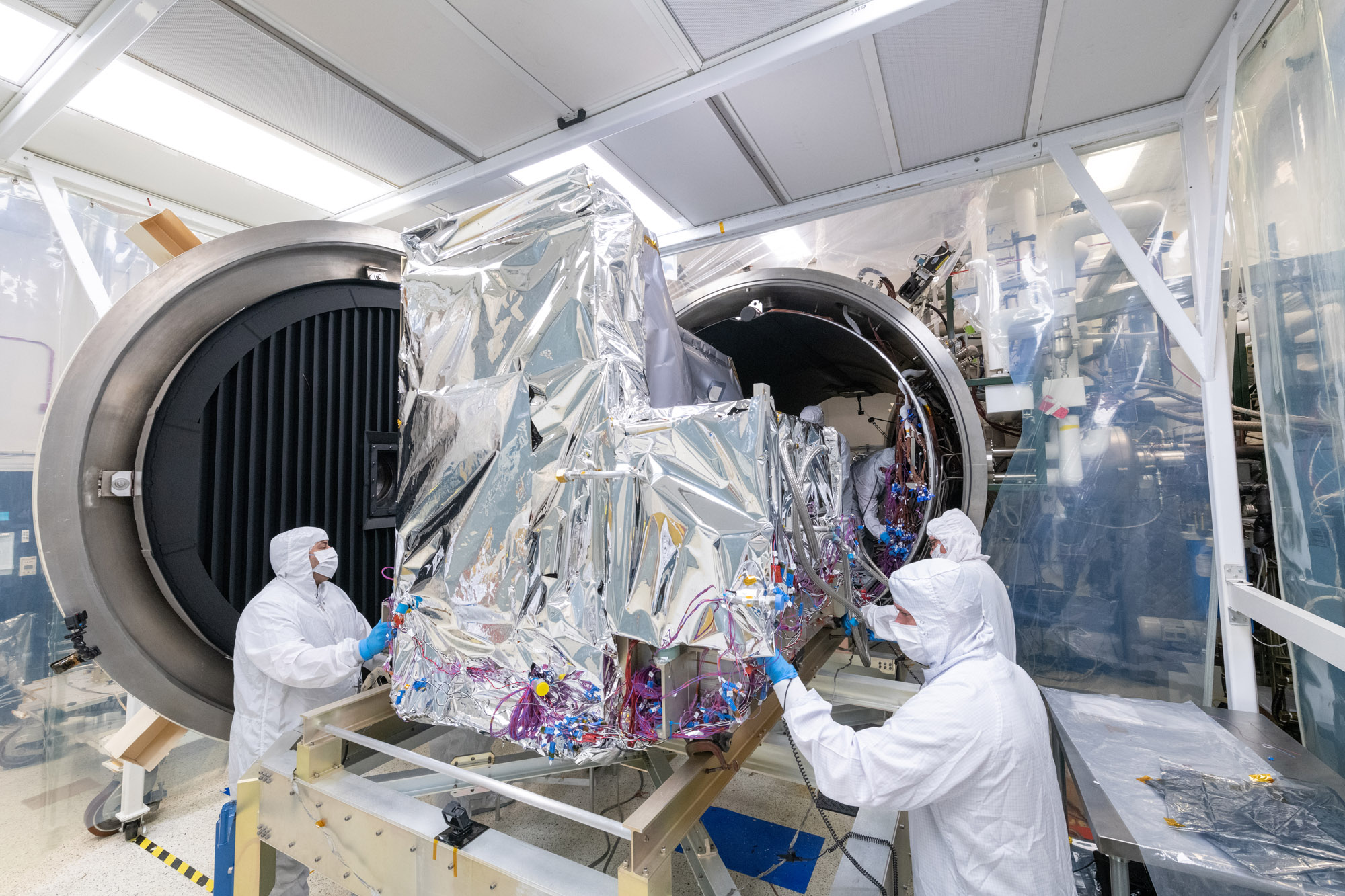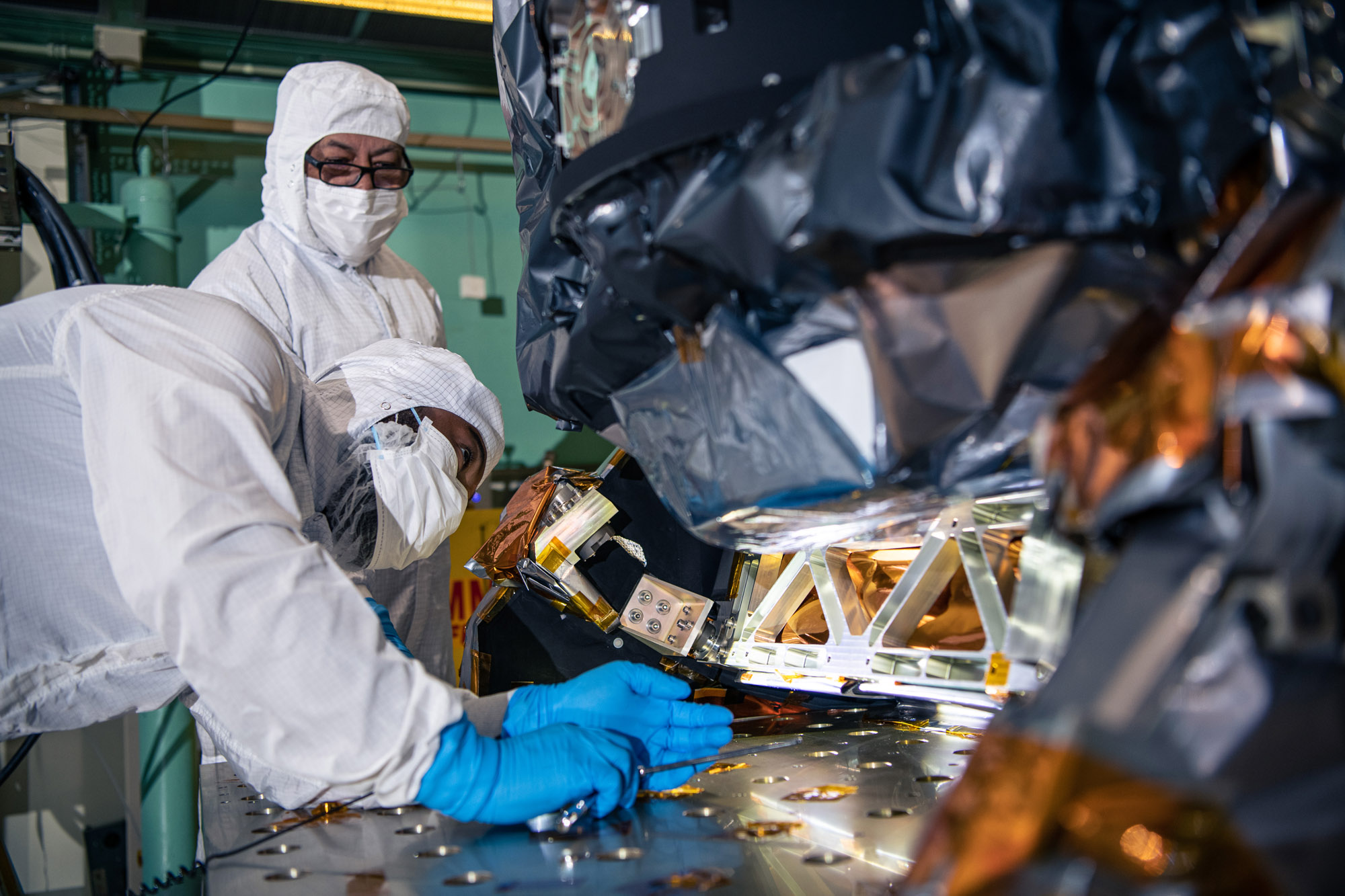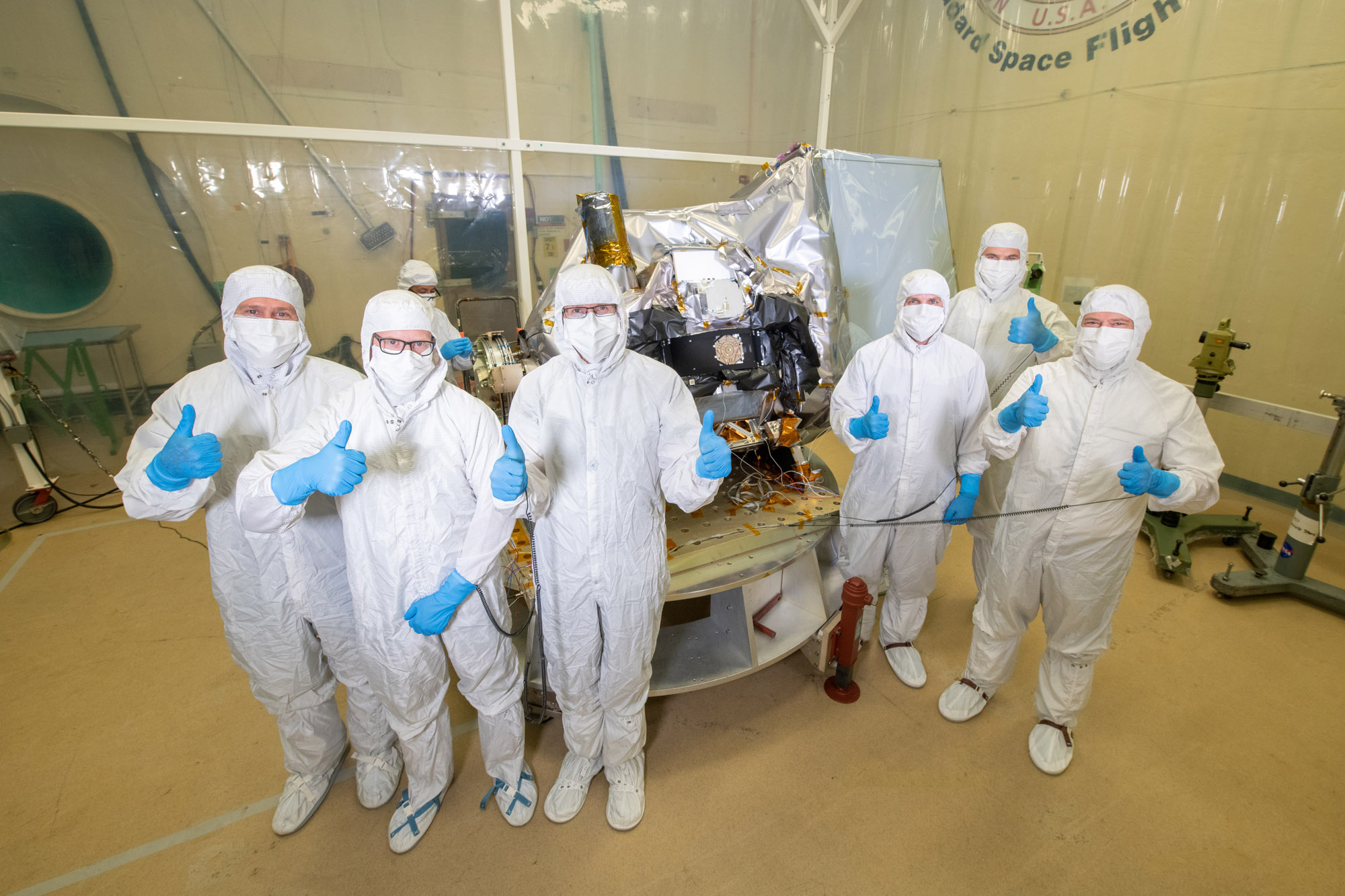Blog
The Importance of PACE's Tilt
Posted on Monday, December 12, 2022 at 12:00:00If you point a satellite instrument straight at Earth's equator, there's a good chance that reflection from the sun will damage your detectors, causing data to be inaccurate or not available at all.
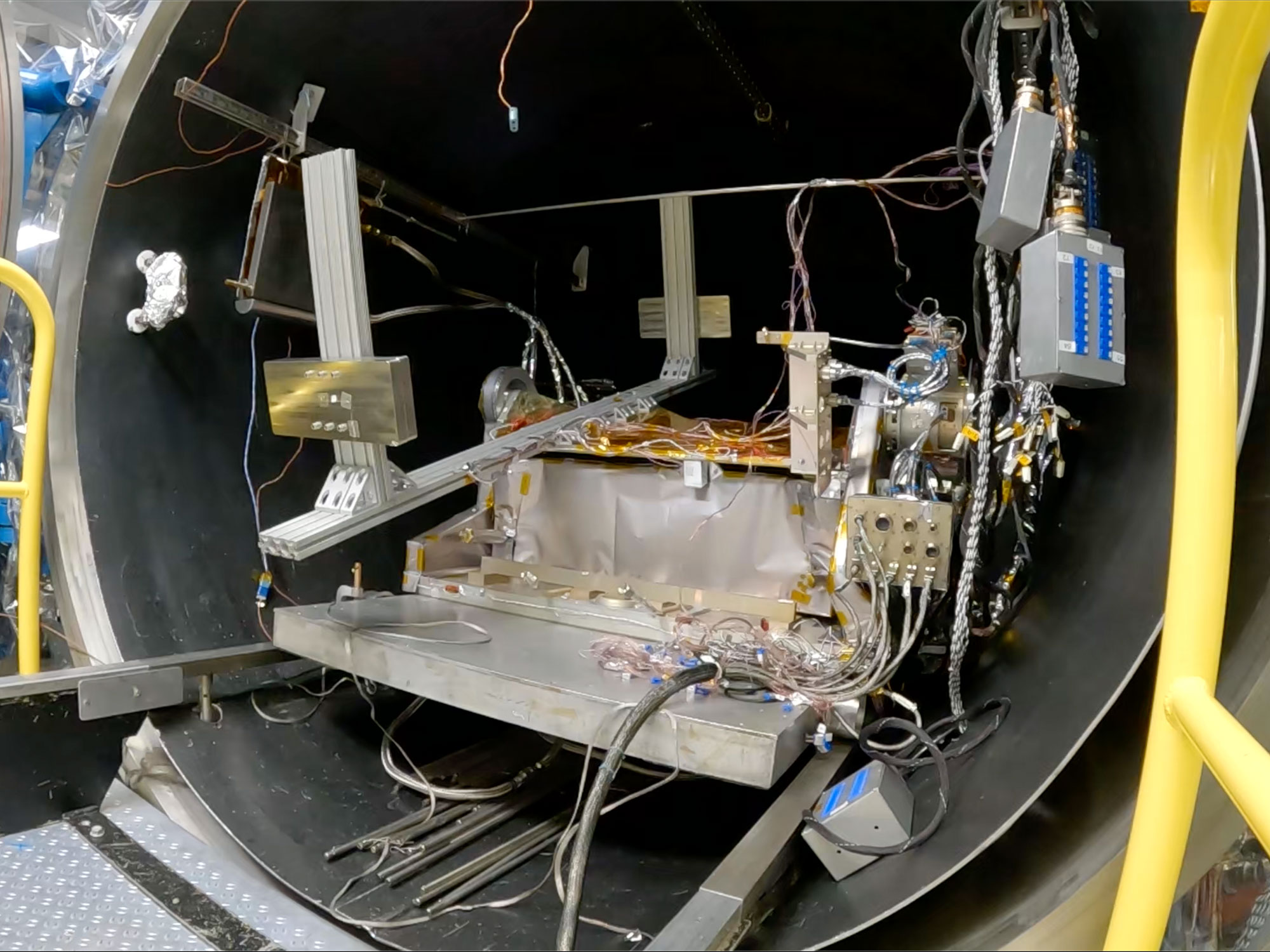
How do you get around it? Do what the PACE team did and add a tilt mechanism that points an instrument away from the sun to their satellite plans.
While a simple idea in theory, the addition of this mechanism will allow researchers to collect ocean color data over the entire planet, even during orbit sections when the position of the sun, the Earth, and the satellite are such that sun reflection is pointed directly at the satellite's sensors.
To understand the tilt, let's first talk about OCI or PACE's Ocean Color instrument.
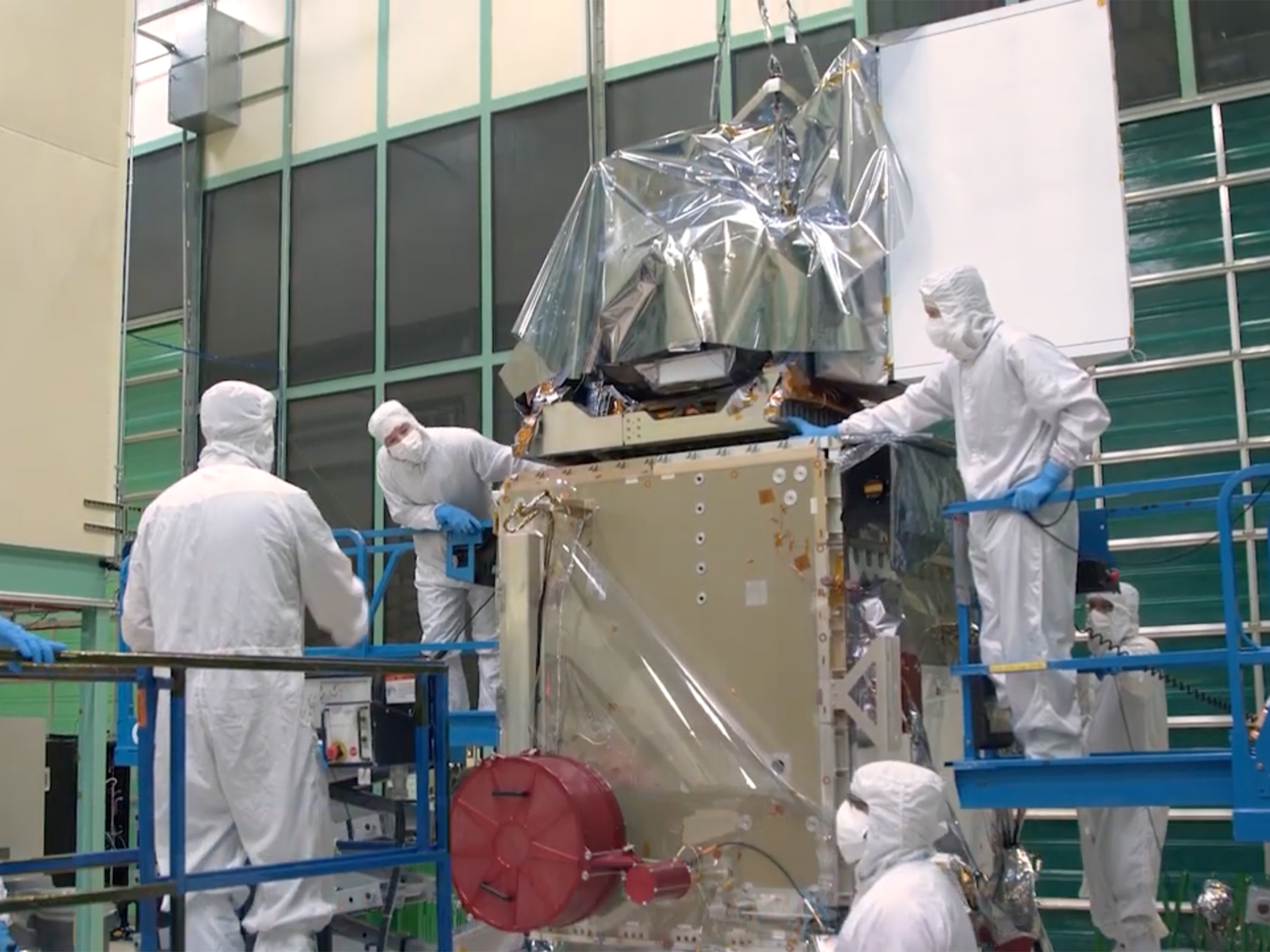
OCI is a highly advanced optical spectrometer that will be used to measure properties of light over ultraviolet to shortwave infrared portions of the electromagnetic spectrum. It will enable continuous measurement of light at finer wavelength resolution than previous NASA satellite sensors, extending key system ocean color data records for climate studies.
Light characteristics reflecting from Earth's atmosphere, land masses and oceans will allow scientists to understand the health of our planet. The data will help better monitor algae blooms as well as temporal and spatial patterns of ocean microorganisms.
"Basically OCI looks down at the Earth and gets info from the ocean," said Chuck Monroe, PACE lead mechanisms engineer, "but if it looks straight down, especially if it's going over the equator or near it, it will see reflections from the sun and the data won't be any good. So, it needs to look off at an angle to avoid sun glint."
Enter the tilt mechanism.
"The tilt system holds OCI. For launch it will support it. Once in orbit, we have a couple of launch lock actuators that will release upon command and then OCI would be free to rotate over a 40 degree range," Monroe said.
On the sunlit side of Earth, PACE will fly north from the south pole towards the north pole. The tilt system will hold OCI at an angle so it's looking 20 degrees backwards before approaching the equator. As PACE nears the equator, the tilt will rotate OCI forward 40 degrees so that it's looking 20 degrees forward for the rest of the orbit.
In other words, it will move around to avoid the reflection of the sun to help secure OCI's data collection.
Once on the dark side of Earth, the tilt will rotate it back to prepare for the next orbit. In orbit, each rotation will last about 35 seconds.
At certain times of year, OCI will collect an additional 17 million square kilometers of ocean data every 2 days relative to its non-tilting predecessors. For context, this is roughly the size of South America.
In the original PACE design, the tilt mechanism was going to be part of OCI, but was later changed to be part of the spacecraft.
"We found ourselves having to put this mechanism between two things that have already been conceptualized and started," said Armando Morell, PACE mechanical engineer, "That created certain design problems."
Despite some constraints, Armando said his team got to work and developed a solution compatible with the on-going designs that allowed the OCI instrument to successfully integrate into the PACE spacecraft earlier this year.
While satellites have rotated instruments before, PACE team members agree that PACE's tilt mechanism will allow for greater volumes of OCI data when operational.
PACE is not the first satellite to use a tilt mechanism. Missions like The Coastal Zone Color Scanner Experiment (CZCS) and the SeaWiFS instrument also used it.
PACE is NASA's Plankton, Aerosol, Cloud, ocean Ecosystem mission, currently in the design phase of mission development. It is scheduled to launch in 2024, extending and improving NASA's over 20-year record of satellite observations of global ocean biology, aerosols (tiny particles suspended in the atmosphere), and clouds.


